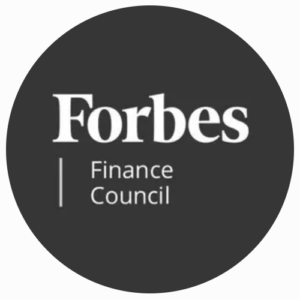
Mansoor Ghori is the CEO & Founder of Petros PACE Finance, a leading C-PACE provider.

Mansoor Ghori Forbes Councils Member
Forbes Finance Council
Commercial real estate (CRE) markets are experiencing profound shifts in the wake of the post-pandemic, higher-interest rate environment. Central business districts (CBDs) composed of sparsely rented office towers are grappling with unprecedented uncertainty as remote work and movement away from the structures traditionally associated with business have transitioned from trend to paradigm.
Adding complexity to the matter, an estimated roughly $1.2 trillion of existing commercial mortgage loans are maturing in 2024 and 2025, leaving property owners and mortgage lenders in a precarious situation: Buildings no longer in demand are becoming increasingly vacant, which leaves owners unable to make payments or negotiate loans at existing rates and decreased property values. Some refer to this as an existential crisis as many cities across the nation are feeling the effects.
High interest rates and a lack of demand are just part of the evolving dynamics of the CRE sector, but they highlight a particular need: sustainable property values that more accurately reflect current and future demand.
The Band-Aid: Extend/Pretend
The notion of “extend and pretend” in financing refers to a tactic employed during financial crises or downturns. It involves lenders offering borrowers extensions on their loans, sometimes with structural changes or an additional contribution of equity.
This allows them to delay repayment, while pretending the loan is performing. Lenders use this tactic to avoid recognizing losses on loans and provide time for the borrower to find solutions. It also maintains the appearance of financial health. This practice can also prolong the resolution of root issues and lead to bigger problems.
Uncertainty And Evolution
The uncertainty of the post-pandemic era has stakeholders reassessing traditional models, and as a result, also reassessing their needs. We know that the shift toward remote work has prompted lessees to think long and hard about the spaces they require and desire. Consequently, there is a discernible trend toward quality over quantity, with an emphasis on building attributes and amenities.
Properties incorporating sustainable features garner increased attention and higher rents, reflecting a growing societal consciousness toward environmental responsibility. As providers of commercial property assessed clean energy (C-PACE) financing, we’ve observed this growing trend over several years.
C-PACE Financing
Amid the CRE market flux, C-PACE financing has emerged as a mechanism for sustainable development. By providing funding for energy efficiency, water conservation and resiliency measures, C-PACE aligns with environmental objectives and supports economic sustainability.
C-PACE is future-forward financing, and while it is growing mainstream, it’s still relatively new. Here are a few relevant scenarios that provide a better understanding of how C-PACE works:
If a property’s value changes during the term of the loan, how would that affect the property owner and their C-PACE loan?
Rising property value has a minimal effect on the C-PACE loan and a larger positive effect on the property owner. It gives the owner flexibility to refinance their existing loan or the ability to cash out equity to invest in other projects.
Conversely, decreasing property value can negatively affect the C-PACE loan, as decreasing value implies that the cash flow has diminished. This result would make it harder to service the existing debt repayment of every loan, including the C-PACE financing.
What should you consider when determining to use C-PACE financing during a sector flux?
First and foremost, is the property eligible for C-PACE in terms of location and improvements? C-PACE is a state program that is active in 30 states plus Washington, D.C. Also, the property must have C-PACE-eligible improvements that tie to energy efficiency, water conservation or resiliency measures.
Second, will the senior lender allow for C-PACE in the capital stack? C-PACE has super senior lien priority, so all lenders with foreclosable debt must consent to C-PACE. More lenders are getting comfortable with C-PACE, primarily because C-PACE is non-accelerable.
Third, the economics must make sense. The good news here, however, is that C-PACE is often cheaper than most available senior debt in the market today. Borrowers need to compare the blended cost of funds using C-PACE versus a conventional execution.
Would C-PACE financing make it harder for a property owner to sell their asset?
During a refinance or sale, the C-PACE loan can either stay with the property or be refinanced out completely. C-PACE provides flexibility in that the loan can be retired with minimal or no prepayment penalty, depending on the time of sale or refinance. This means that at a sale, the buyer can either keep the C-PACE loan in place or retire the financing completely.
The Reset
While the future of CRE markets remains challenging in the near term, certain trends can be seen through the fog. The flight to quality is expected to persist, with lessees placing emphasis on sustainable and resilient properties. Eventually, the rubber will hit the road; “truer” property values will need to be set so that prices better reflect demand. This type of reset can help return the CRE market to “normal,” where banks are not holding properties on their balance sheets and the effect of the reset trickles down to lessees.
As the market undergoes this necessary reset to align property prices with existing demand, C-PACE financing is poised to play an instrumental role. By facilitating the enhancement of existing properties and incentivizing sustainable development, C-PACE is anticipated to maintain its prominence in the evolving CRE ecosystem. Developers, borrowers and lenders have now embraced C-PACE financing as a mechanism to help solve the financing question.
The current upheaval in CRE markets reflects a cycle. Although it has been very disruptive to the CRE market, it is a cycle, nonetheless. This inflection point could signal the beginning of significant changes in cities and CBDs as we currently know them.
As stakeholders navigate the uncertainties of the landscape, embracing sustainability and innovative financing—and keeping an eye toward a more efficient and enjoyable future—will be paramount in fostering resilience and prosperity in the CRE sector. The functions of properties in CBDs may evolve and shift, but the continuing “flight to quality” underscores the importance of initiatives such as C-PACE—future-forward financing that’s ready for what comes next.
The information provided here is not investment, tax or financial advice. You should consult with a licensed professional for advice concerning your specific situation.
